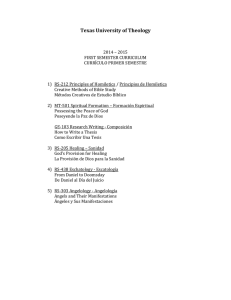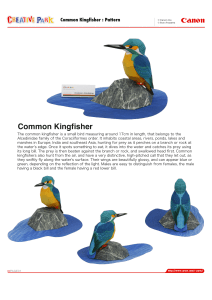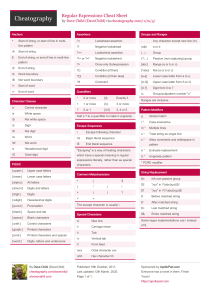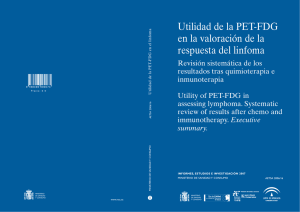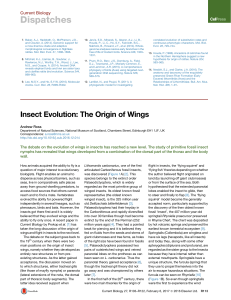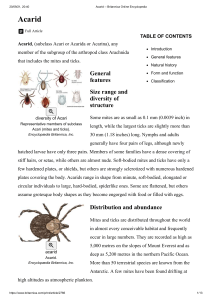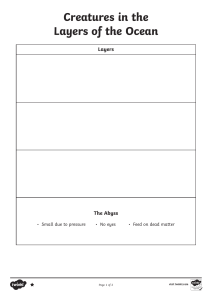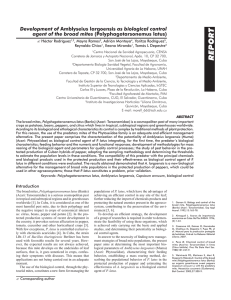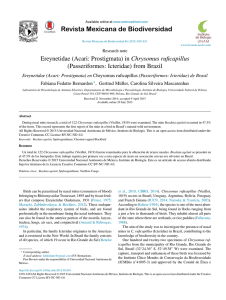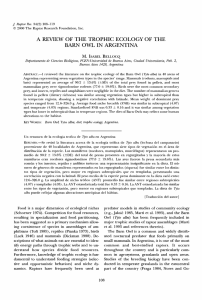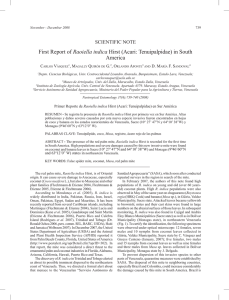Does the ability of Blattisocius species to prey on mites and insects
Anuncio
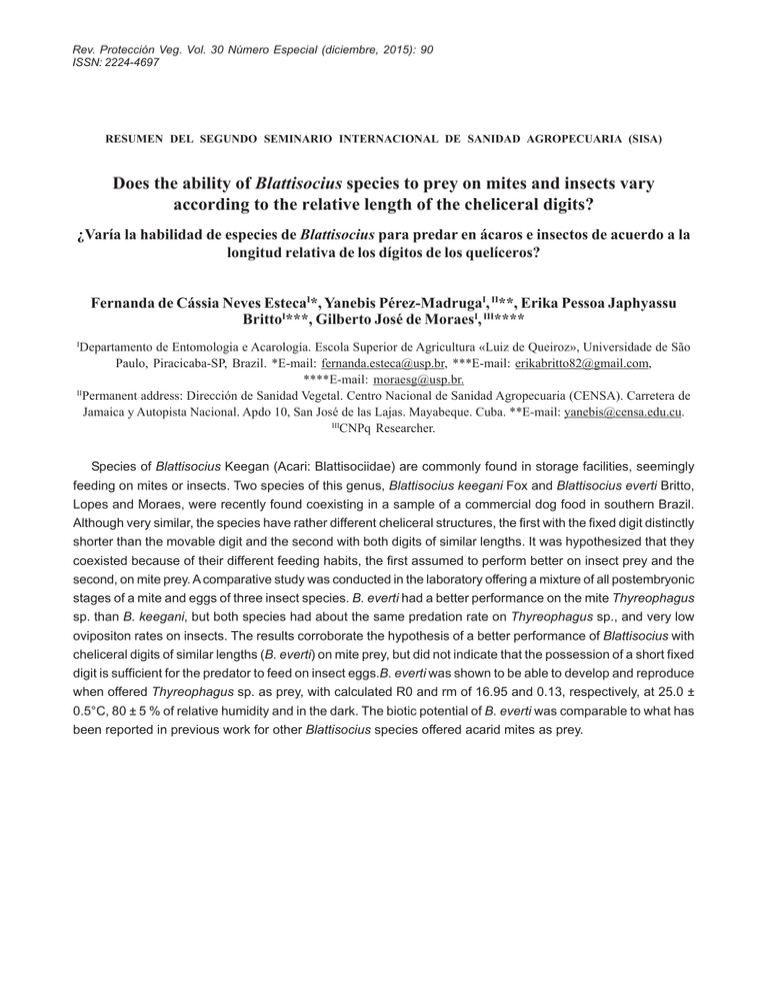
Rev. Protección Veg. Vol. 30 Número Especial (diciembre, 2015): 90 ISSN: 2224-4697 RESUMEN DEL SEGUNDO SEMINARIO INTERNACIONAL DE SANIDAD AGROPECUARIA (SISA) Does the ability of Blattisocius species to prey on mites and insects vary according to the relative length of the cheliceral digits? ¿Varía la habilidad de especies de Blattisocius para predar en ácaros e insectos de acuerdo a la longitud relativa de los dígitos de los quelíceros? Fernanda de Cássia Neves EstecaI*, Yanebis Pérez-MadrugaI, II**, Erika Pessoa Japhyassu BrittoI***, Gilberto José de MoraesI, III**** I Departamento de Entomologia e Acarología. Escola Superior de Agricultura «Luiz de Queiroz», Universidade de São Paulo, Piracicaba-SP, Brazil. *E-mail: [email protected], ***E-mail: [email protected], ****E-mail: [email protected]. II Permanent address: Dirección de Sanidad Vegetal. Centro Nacional de Sanidad Agropecuaria (CENSA). Carretera de Jamaica y Autopista Nacional. Apdo 10, San José de las Lajas. Mayabeque. Cuba. **E-mail: [email protected]. III CNPq Researcher. Species of Blattisocius Keegan (Acari: Blattisociidae) are commonly found in storage facilities, seemingly feeding on mites or insects. Two species of this genus, Blattisocius keegani Fox and Blattisocius everti Britto, Lopes and Moraes, were recently found coexisting in a sample of a commercial dog food in southern Brazil. Although very similar, the species have rather different cheliceral structures, the first with the fixed digit distinctly shorter than the movable digit and the second with both digits of similar lengths. It was hypothesized that they coexisted because of their different feeding habits, the first assumed to perform better on insect prey and the second, on mite prey. A comparative study was conducted in the laboratory offering a mixture of all postembryonic stages of a mite and eggs of three insect species. B. everti had a better performance on the mite Thyreophagus sp. than B. keegani, but both species had about the same predation rate on Thyreophagus sp., and very low ovipositon rates on insects. The results corroborate the hypothesis of a better performance of Blattisocius with cheliceral digits of similar lengths (B. everti) on mite prey, but did not indicate that the possession of a short fixed digit is sufficient for the predator to feed on insect eggs.B. everti was shown to be able to develop and reproduce when offered Thyreophagus sp. as prey, with calculated R0 and rm of 16.95 and 0.13, respectively, at 25.0 ± 0.5°C, 80 ± 5 % of relative humidity and in the dark. The biotic potential of B. everti was comparable to what has been reported in previous work for other Blattisocius species offered acarid mites as prey.
